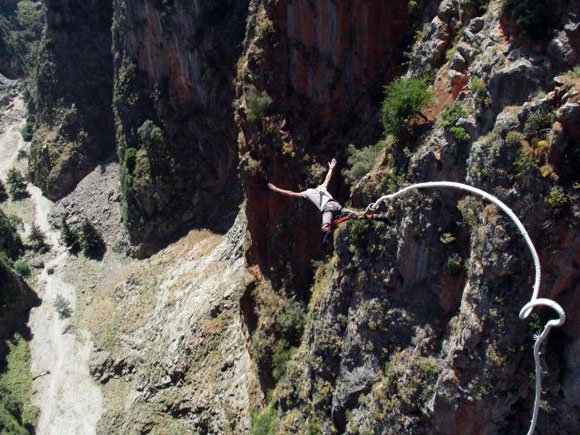Jun 28 2011
BUNGEE JUMPING
This sport, described as extreme, no faint-hearted.
It is unusual in our country, because not many suitable sites for development.
Bungee Jumping is an extreme sport, which is basically jump into the void from a great height from either a bridge or platform attached to the ankles or waist with a bungee cord to cause a bounce and avoid the fall.

HISTORY
The word "bungee" originates from West Country dialect, meaning "Anything thick and squat",as defined by James Jennings in his book "Observations of Some of the Dialects in The West of England" published 1825. Around 1930 the name became used for a rubber eraser. The word bungy, as used by A J Hackett, is "Kiwi slang for an Elastic Strap". Cloth-covered rubber cords with hooks on the ends have been available for decades under the generic name bungy cords.
In the 1950s David Attenborough and a BBC film crew brought back footage of the "land divers" (known as "Naghol") of Pentecost Island in Vanuatu, young men who jumped from tall wooden platforms with vines tied to their ankles as a test of their courage and passage into manhood. A similar practice, only with a much slower pace for falling, has been practised as the Danza de los Voladores de Papantla or the 'Papantla flyers' of central Mexico, a tradition dating back to the days of the Aztecs.
A tower 4,000 feet (1,200 m) high with a system to drop a “car” suspended by a cable of “best rubber” was proposed for the Chicago World Fair, 1892-1893. The car, seating two hundred people, would be shoved from a platform on the tower and then bounce to a stop. The designer engineer suggested that for safety the ground below “be covered with eight feet of feather bedding”. The proposal was declined by the Fair’s organizers.
